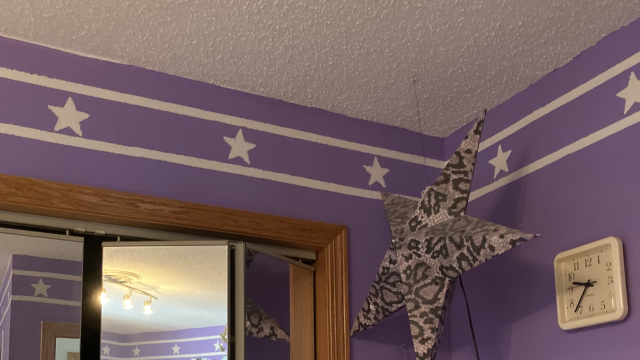Painting doesn’t have to preclude creativity: You can do so much more than putting a solid colour on your wall. From adding textures to designs, you can give your space more character with less trouble than you might think.
Consider sponge painting
If you want to create a dual-toned effect in your room, try sponge-painting to stipple a bit of secondary colour over your base coat. After your base coat is dry, use a damp, wrung-out sponge to lightly dab another colour on top of it in a random pattern (though you should start in one area and move vertically or horizontally from there to keep it from looking haphazard). This method works best with a simple base colour — like beige or grey — and a top colour that is a lot less boring.
Ideally, you should use a big, natural sea sponge, which will offer a better pattern; and if you mix your top colour with equal parts glaze it will show up better, according to This Old House. And if you really want a dimensional effect, add a third colour when the second one is dry.
Try crinkle paper painting
Sponge painting creates the illusion of texture, but if you want the real deal, consider crinkle paper painting. First, crinkle up enough tissue paper to cover your wall when the paper is flattened back out, and set it aside. (For best results, tear it into manageably sized sheets, but remember you need enough to cover your whole wall.)
Put down your base coat of paint and, while it’s still wet, spread the wrinkled-up pieces of tissue paper over it, overlapping them at the edges by a half inch or so. You can move them around until you like the look, but act quickly — it gets harder to adjust as that bottom layer of paint dries. Don’t worry about any paper left sticking out at corners or over windowsills and the like; you can trim and dispose of it when you’re done.
Once you’ve covered the wall, apply the top layer of paint over the paper. Ideally, the bottom layer will still be a little wet, and the two coats will sandwich the paper snugly between them. Once the wall has dried, use a razor to cut away any excess paper sticking out in corners, over baseboards, or anywhere else.
Make your own patterns with tape
You can make jagged, intersecting lines with tape, then paint in the sections using different shades. When it’s dry, peel the tape off to reveal a random, geometric pattern of coordinating colours.
The design doesn’t have to be intense to have an impact — you can see the photo above for a simple example, courtesy of my mother and me. We made two lines around the top of the wall of my childhood bedroom, then cut stars out of contact paper and stuck them in the centre. When the paint dried, we removed the sticky parts and had a sharp border to add just a little dimension that broke up the bold colour.
Of course, get as creative as you want. You can use tape to make a diagonal line from the bottom corner of one wall to the opposite top corner and paint each side a different colour. (You’ll have to carefully hand-paint the white line with one of the colours when you peel it off after it’s dried.) Or, use tape to make vertical stripes the whole way around a room (or even just on one wall). If you’re going to go through all the effort of painting, you might as well have fun.

Leave a Reply
You must be logged in to post a comment.